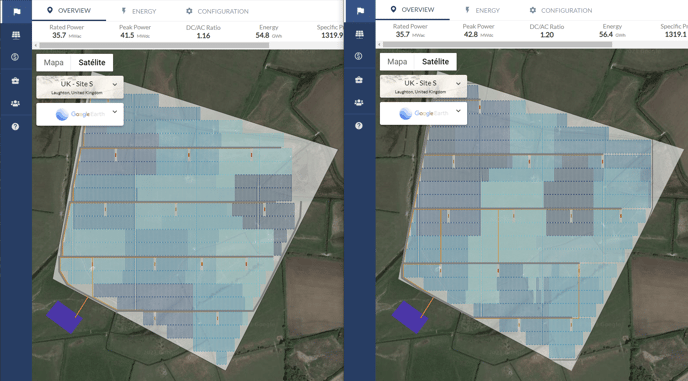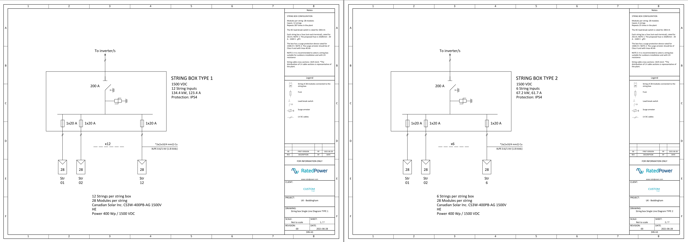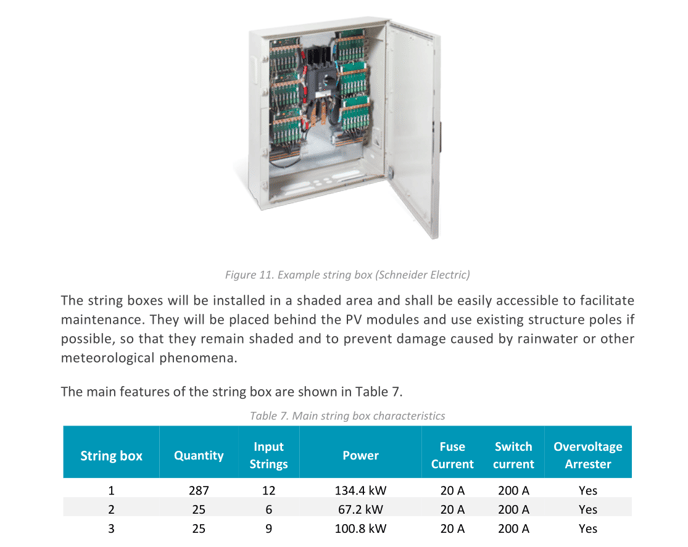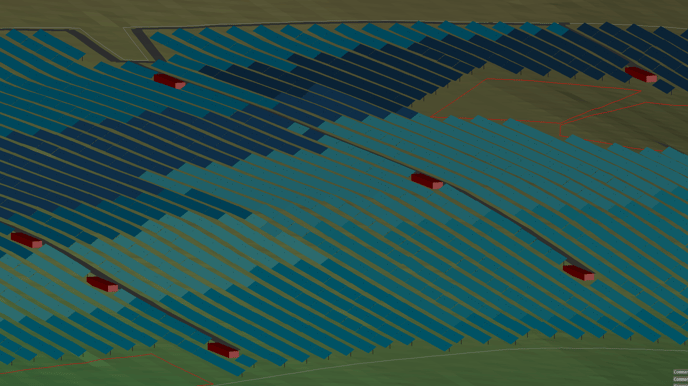Layout calculation engine overhaul, earthworks calculation
pvDesign - backend v5.0.22, frontend v1.1.1
New Features
In June we released the biggest calculation engine overhaul since the initial release of pvDesign 2.0 in 2018. The objectives of the project were:
- To improve the overall quality of the layout, especially the position of the roads and the usage of empty spaces near the perimeter.
- To reach higher capacity than before while matching the required DC/AC ratio.
- To allow for faster development of new features in the future.
This month also saw the release of a new earthworks calculation feature, which has been a popular user request for a long time. The earthworks feature works in combination with the topography analysis to achieve better compliance with the terrain and more accurate cost estimates.
In this release we temporarily disabled the Regular Blocks feature. This functionality will return in a future release, which we plan to deploy as soon a possible.
Calculation engine overhaul
- Better roads algorithm: The algorithm responsible for choosing the position and layout of the roads has been rewritten from scratch. The new algorithm can adjust the position of the roads to the perimeter, and remove redundant roads, to achieve higher peak power than before. The total roads length is reduced as well.

Before (left), after (right). The roads are more adjusted to the perimeter, no redundant roads are present, and the peak power is increased
- Flexible electrical configuration: pvDesign can now adapt the low level DC field electrical configuration to achieve the desired DC/AC ratio. For example, the number of strings per string box will now be variable, with the last box being different than the standard box. In the string inverter configuration, individual inverters may have a different number of strings to achieve the desired global DC/AC ratio. The changes are reflected in the low voltage single line diagram document.
We also simplified the design process page. The number of strings per string box now corresponds to the standard string box. Only the valid values are allowed.

The different types of string boxes are shown in the LV SLD document

- Improved specific capacity mode: Thanks to the enhanced roads and the flexible electrical configuration, it is now easier to reach the desired DC peak capacity than before. Fine adjustment of the plant characteristics is now possible using the DC/AC ratio.
- Better fence layout: The fence should now be more adjusted to the layout than before, resulting in reduced fence length. Additionally, it is now not possible for the fence to cross restricted areas.
- Enhanced documents: We improved the Design Report, Low Voltage Single Line Diagram, and Medium Voltage Single Line Diagrams. These documents now reflect the flexible electrical configuration found in the layout.

- Faster simulation and previews: Some simulations should be much faster than before. Specifically, simulations with many areas should be finish earlier than in previous releases. Layout previous using the topography analysis feature should be much faster as well.
- Better definition of structure dimensions: It is now possible to explicitly define the number of strings per structure. For linked row trackers, the number of tracker rows per linked row tracker can be defined. Additionally, the structure length is now shown alongside the strings per structure.

- Better layout 3D: The power stations and roads are now shown in the Layout 3D document. The roads are projected on the ground level, and raised by 50 cm. The power stations are placed in an elevation consistent with their center position.

Earthworks
- Earthworks calculation per structure: pvDesign can now calculate the volume of earthworks required to install a structure. If the user selects a linked row tracker structure, the earthworks are performed for the entire tracker.
If the structure is within the bounds set by the user, an earthworks platform is calculated. The platform follows the slope of the terrain, but its slope is limited in value.
- Improved documents: The results of the earthworks calculation are presented in the Bill of Quantities (total fill and cut volumes), Listing of Posts (earthworks sheet, shows the result of each platform), Topography Analysis (shows the boundaries of each platform), Layout 3D (platforms are drawn in yellow), Structure Profiles (ground before and after earthworks is shown), and Design Report (describes the design criteria set by the user).
- Undulation tolerance: We changed how the pile length filter works. Now it is called undulation tolerance, and it refers to the difference in length between the shortest and the longest pile in a structure. This difference reflects the undulation of the terrain below the structure, as the piles are stretched to match the terrain while keeping the pile depth constant.
- Pile length: This input replaces the post depth input. The pile length is the length of the shortest pile of the structure.
Bug fixes and improvements
When we remade the calculation model, we made a huge number of improvements to the internal components of pvDesign. This list only includes changes made to the software before the release, and after the release was deployed.
- We changed the name of "post" to "pile", following user feedback.
- It is now possible to disable the UTM convergence correction (Civil tab in design process).
- We improved the digital elevation model, it is now faster and more efficient than before.
- We fixed many translations in the user interface.
- The description of trenches in the design report is now more accurate, and fixed many issues in the document.
- Fixed a number of bugs after the calculation engine overhaul release.
- Improved the earth works calculation so that the cut and fill volumes are more balanced.
- Fixed an issue which caused string inverter simulations to use the string box configuration, unless the user manually selected the correct electrical configuration.
- Added the fixed structure tilt value to the layout document.
- Changed the colors of the structures in the layout preview, in design process.
- Fixed an issue which caused the structures to be misaligned when using border adaptation and certain combinations of roads and structure type.
